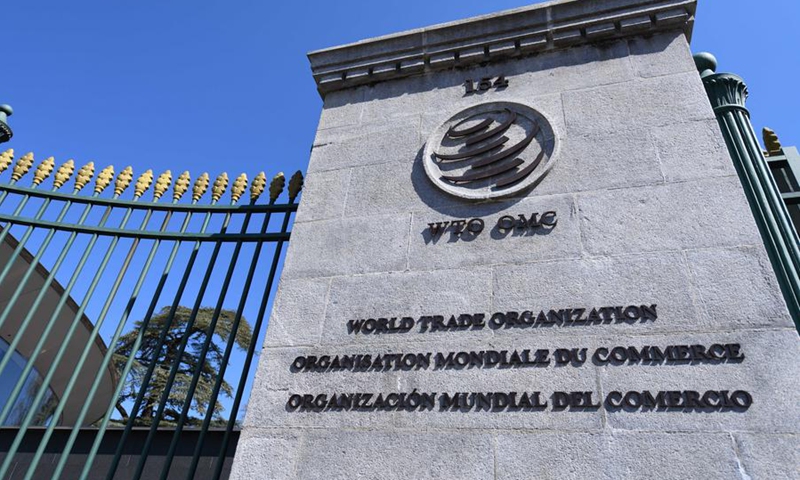
A logo of the World Trade Organization (WTO) is seen in Geneva, Switzerland, on April 5, 2023. (Photo: Xinhua)
The volume of global merchandise trade is expected to increase by 2.7 percent in 2024, the World Trade Organization (WTO) said in an update of the Global Trade Outlook and Statistics released on Thursday.
This prediction is slightly higher than the WTO's earlier forecast of 2.6 percent made in April.
According to the report, global merchandise trade experienced an upward trend in the first half of 2024, showing a year-on-year increase of 2.3 percent. This growth is expected to be followed by further moderate expansion throughout the remainder of the year and into 2025.
Global real gross domestic product growth at market exchange rates is projected to remain steady at 2.7 percent in both 2024 and 2025, the report said.
The WTO noted that by mid-2024, inflation had decreased sufficiently to enable central banks to cut interest rates. This decline in inflation is expected to increase real household incomes and stimulate consumer spending, while lower interest rates should encourage firms to boost their investment spending.
The report also cautioned that diverging monetary policies among major economies could result in financial volatility and shifts in capital flows as central banks lower interest rates. This situation may make debt servicing more difficult, especially for poorer economies.
"We are expecting a gradual recovery in global trade for 2024, but we remain vigilant of potential setbacks, particularly the potential escalation of regional conflicts like those in the Middle East," WTO Director-General Ngozi Okonjo-Iweala said.
The impact could be most severe for the countries directly affected, but it may also indirectly influence global energy costs and shipping routes, she said, calling for continuous efforts to foster inclusive global trade.
"It is imperative that we continue to work collectively to ensure global economic stability and sustained growth, as these are fundamental to enhancing the welfare of people worldwide," she said.
The report forecasts a decline in exports in Europe by 1.4 percent and a decrease in imports by 2.3 percent in 2024. European exports have been negatively impacted by the region's automotive and chemicals sectors.
Meanwhile, exports in Asia for this year are expected to grow by 7.4 percent, outpacing other regions. Driven by manufacturing powerhouses such as China, Singapore and South Korea, the region's exports rebounded strongly in the first half of this year.
The short-term outlook for services trade is more optimistic than that for goods trade, with an 8-percent year-on-year growth in the U.S. dollar value of commercial services trade recorded in the first quarter of 2024. The report added that statistics indicate this relatively strong growth is likely to continue into the second quarter for services trade.




